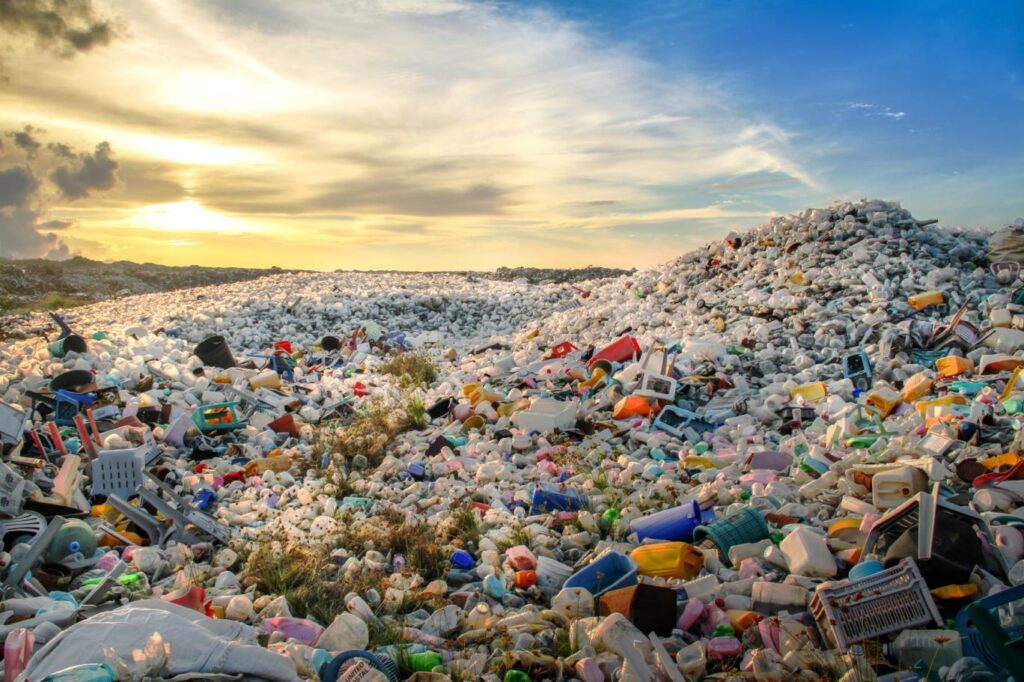The production of bioplastics using clean energy sources may make the plastics sector, which represents a burden on the environment, one of the means of storing carbon
Despite the huge burdens posed by plastic waste on the environment, and the pollution it causes, resulting in the deterioration of many natural and ecological systems, a recent study showed that the plastic sector – which is expected to multiply several times over the next few decades – can provide unconventional solutions to many problems. environmental crises, especially the crises resulting from climate change and the increased consumption of natural resources.
According to a study prepared by a research team from the Dutch University of Utrecht in cooperation with other Dutch institutions, “the production of bioplastics using clean energy sources may make the plastic sector, which represents a burden on the environment, one of the means of carbon storage.”
The study, published by the journal Nature, states that “plastics are at the top of the most growing products, and they are responsible for 4.5% of global greenhouse gas emissions, and the global demand for plastics is expected to double by 2050, and more than triple by year 2100, and this is accompanied by parallel increases in carbon emissions.
The press release accompanying the study – a copy of which was obtained by the “For Science” magazine – indicates that “the models used by the experts of the Intergovernmental Panel on Climate Change did not include any details showing the extent of the impact of plastic production and use on the state of the climate in the world, so the researchers worked to develop A new model to assess four scenarios for the growth of the plastics industry at the global level.
The researchers’ findings showed that the prohibitive cost of reducing greenhouse gas emissions, to achieve the Paris Agreement’s goal of preventing global warming by more than 2 degrees above the pre-industrial level, would not be sufficient to encourage the plastics sector to shift from using fossil materials to biological raw materials, or Expansion of circular economy applications.
It has also been shown that the measures to mitigate the consequences of climate change, which are currently in force, may push towards the disposal of plastic waste by burying more of it in the soil, given that this method prevents carbon dioxide emissions resulting from burning it, and this technology is cheaper and less expensive. The cost of other means of dealing with these wastes, which are very dangerous to environmental systems, according to the statement.
And on how the plastic sector has transformed from a burden on environmental systems to one of the promising solutions to the climate crisis, Paul Stegmann – a member of the research team for the Dutch “Applied Scientific Research Organization” – explained that it is known that plants absorb carbon dioxide during their growth, and therefore in the case of using The biomass of these plants in the production of plastics, carbon is stored in these products, making them a “carbon sink” as long as they are kept in use and not burned.
“Stegman” adds in statements to “For Information”: In this way, the plastics sector can in the near future be one of the basic facilities for storing more carbon dioxide emissions from the Earth’s atmosphere, at rates more than the emissions emanating from this sector, which means that the rate of emissions It is negative, which helps to reduce climate change.
See more: 7 dangers of extreme weather events
But Stegmann reaffirmed that this requires a sustainable supply of plants that represent biomass (the basis for the production of plastics), and this should not be at the expense of deforestation, and new and renewable energy sources must be relied upon in plastic production, in addition to increasing rates of Significantly increase the recycling of plastic products, to reduce carbon emissions resulting from them to a minimum.
The study states that “the recycling of plastics leads to relieving pressure on natural resources and preserving them from depletion, but it is not possible to reach 100% recycling of plastic waste; For example, when one kilogram is sent to recycling plants, only about 70% of it can be used, and the remaining percentage is disposed of because it cannot be used.”












